Why White Horse Temple Heritage Should Be on Your Travel Itinerary

An Essential Guide to Visiting White Horse Temple Heritage
In This Guide
- An Essential Guide to Visiting White Horse Temple Heritage
- The Rich History and Legends of White Horse Temple Heritage
- Main Highlights: What You Absolutely Can’t Miss
- Planning Your Visit: A Practical Guide
- Tickets: Prices, Booking, and Tips
- How to Get There: A Complete Transportation Guide
- Local Cuisine and Accommodation Nearby
- Frequently Asked Questions
- Final Thoughts on Your Trip
Nestled just twelve kilometers east of Luoyang in Henan province, the White Horse Temple (白马寺) stands as a testament to China’s rich cultural and religious history. Founded in 68 AD during the Eastern Han Dynasty, this sacred site is renowned as the first state-sponsored Buddhist temple in the country, marking the pivotal moment when Buddhism began its journey into Chinese culture. Revered as the “Cradle of Chinese Buddhism,” White Horse Temple is not only a spiritual sanctuary but also a magnificent architectural marvel that offers visitors a glimpse into the profound legacy of Buddhist art and philosophy.
As you step into the temple grounds, you are greeted by a harmonious blend of ancient traditions and serene natural landscapes. The temple complex features a well-organized layout, with its main structures aligned along a central axis. From the majestic Hall of the Great Hero to the ornate Buddha Hall, each building exudes a sense of peace and reverence. Moreover, the recently established International Buddhist Hall Area showcases architectural styles from countries such as India, Thailand, Myanmar, and Sri Lanka, reflecting the temple’s commitment to fostering a global understanding of Buddhism.
Visiting White Horse Temple is more than just a journey through history; it’s an invitation to engage with the spiritual essence that has shaped this land for centuries. Whether you are a history enthusiast, a cultural explorer, or simply seeking a tranquil getaway from the bustle of modern life, this site promises an enriching experience that resonates with the wisdom of the ages.

White Horse Temple Heritage.
In this guide, we will navigate the essential aspects of planning your visit to White Horse Temple, from ticketing and transportation to must-see highlights and practical tips. Prepare yourself for a captivating journey into one of China’s most revered historical treasures.
The Rich History and Legends of White Horse Temple Heritage
A Journey Through Time: The Historical Significance of White Horse Temple
Nestled in the scenic outskirts of Luoyang, Henan Province, White Horse Temple (白马寺) stands as a monumental testament to the profound roots of Buddhism in China. Established in 68 AD during the Eastern Han Dynasty, it is recognized as the first official Buddhist temple built by the government, marking a pivotal point in the history of Chinese Buddhism.
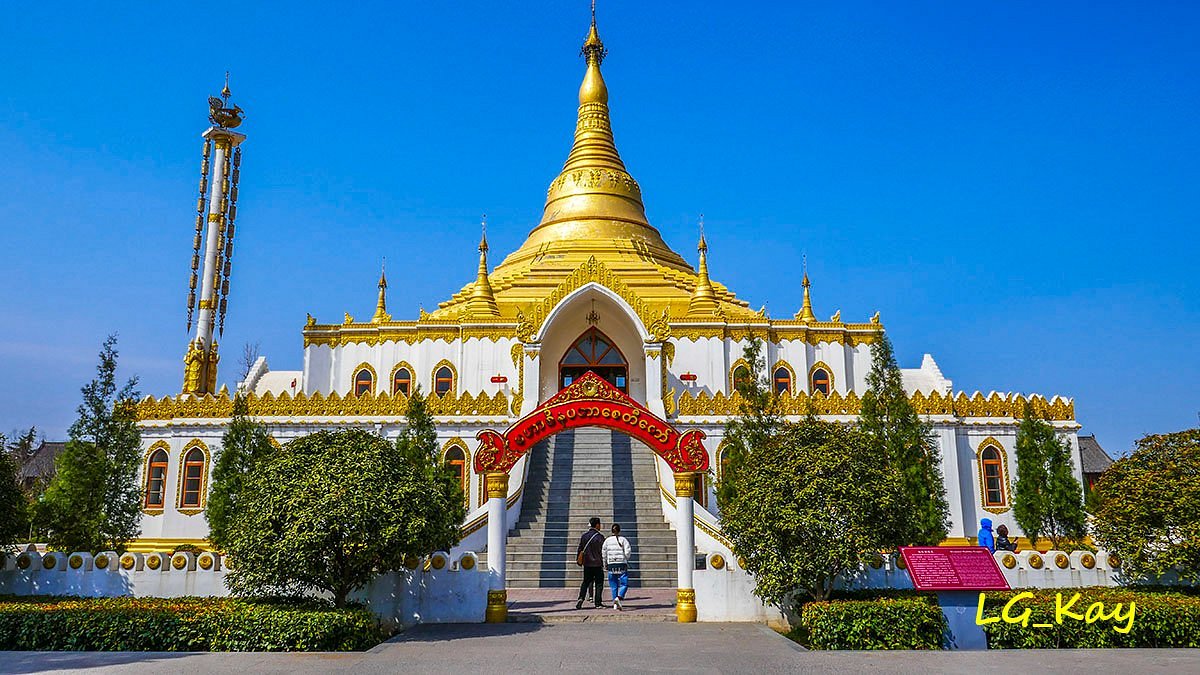
White Horse Temple Heritage.
The Origins of White Horse Temple
The temple’s name is steeped in legend. According to historical accounts, Emperor Ming of the Han Dynasty dreamed of a golden man preaching in the West, prompting him to send emissaries to India. They returned with two Buddhist monks, Kasyapa Matanga and Dharmaratna, who brought sacred scriptures and images of Buddha. To honor their arrival, the emperor constructed this temple, using a white horse to transport the sacred texts, thus giving the temple its name.
Architectural Marvels
White Horse Temple features a harmonious layout that reflects traditional Chinese architectural principles. The complex is structured along a central axis, where various halls and pavilions are aligned, including the Hall of Heavenly Kings and the Great Buddha Hall. Each building showcases exquisite craftsmanship, with intricately carved eaves and soaring roofs that embody the artistry of ancient Chinese architecture.

White Horse Temple Heritage.
Key Highlights of the Temple:
– Main Halls: The temple houses five significant halls, each with its own unique significance and architectural style.
– International Buddhist Pavilion: An addition to the temple, this area features pavilions styled after Buddhist architecture from India, Thailand, Myanmar, and more, symbolizing the global influence of Buddhism.
– Cultural Exchange: The architecture and design reflect a blend of cultures, showcasing the temple as a melting pot of Eastern and Western influences.
Legends and Lore
The temple is not just a historical site; it is also steeped in fascinating legends. One such tale involves the White Horse itself, which is said to have carried the first scriptures. Locals believe that the horse’s spirit still watches over the temple, blessing visitors with wisdom and serenity.
Another legend speaks of the Cleansing Platform, where it is said that monks conducted rituals believed to purify the soul. Pilgrims often visit this platform, hoping to attain spiritual clarity and peace.
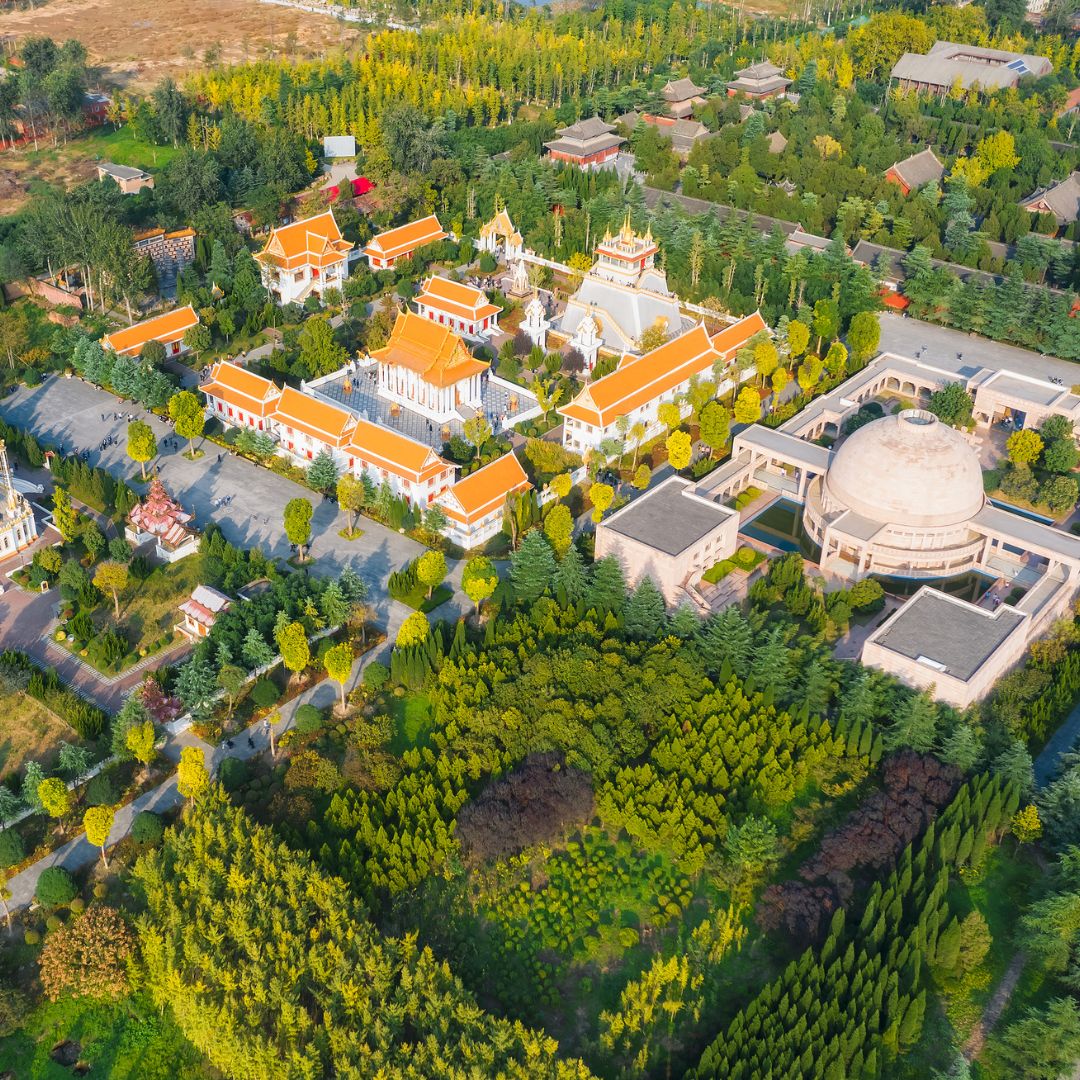
White Horse Temple Heritage.
A Living Heritage
Today, White Horse Temple is not only a place of worship but also a vibrant cultural heritage site. It attracts thousands of visitors each year, both pilgrims and tourists, who come to appreciate its artistic beauty and historical significance. The temple serves as a reminder of the enduring legacy of Buddhism in China, representing centuries of tradition, faith, and cultural exchange.
Visitors can immerse themselves in the tranquil atmosphere of the temple grounds, where the sound of chanting and the gentle ringing of bells create a serene environment. Wandering through the temple, one can almost feel the weight of history and the whispers of the past that resonate within its walls.
Conclusion
White Horse Temple stands as a beacon of China’s rich spiritual heritage and architectural beauty. Its storied past and the legends that surround it make it a must-visit destination for anyone looking to delve deeper into the history and culture of Buddhism in China. As you walk through its hallowed halls, you will not only witness the artistry of ancient builders but also connect with the spiritual essence that has drawn countless seekers of wisdom over the centuries.
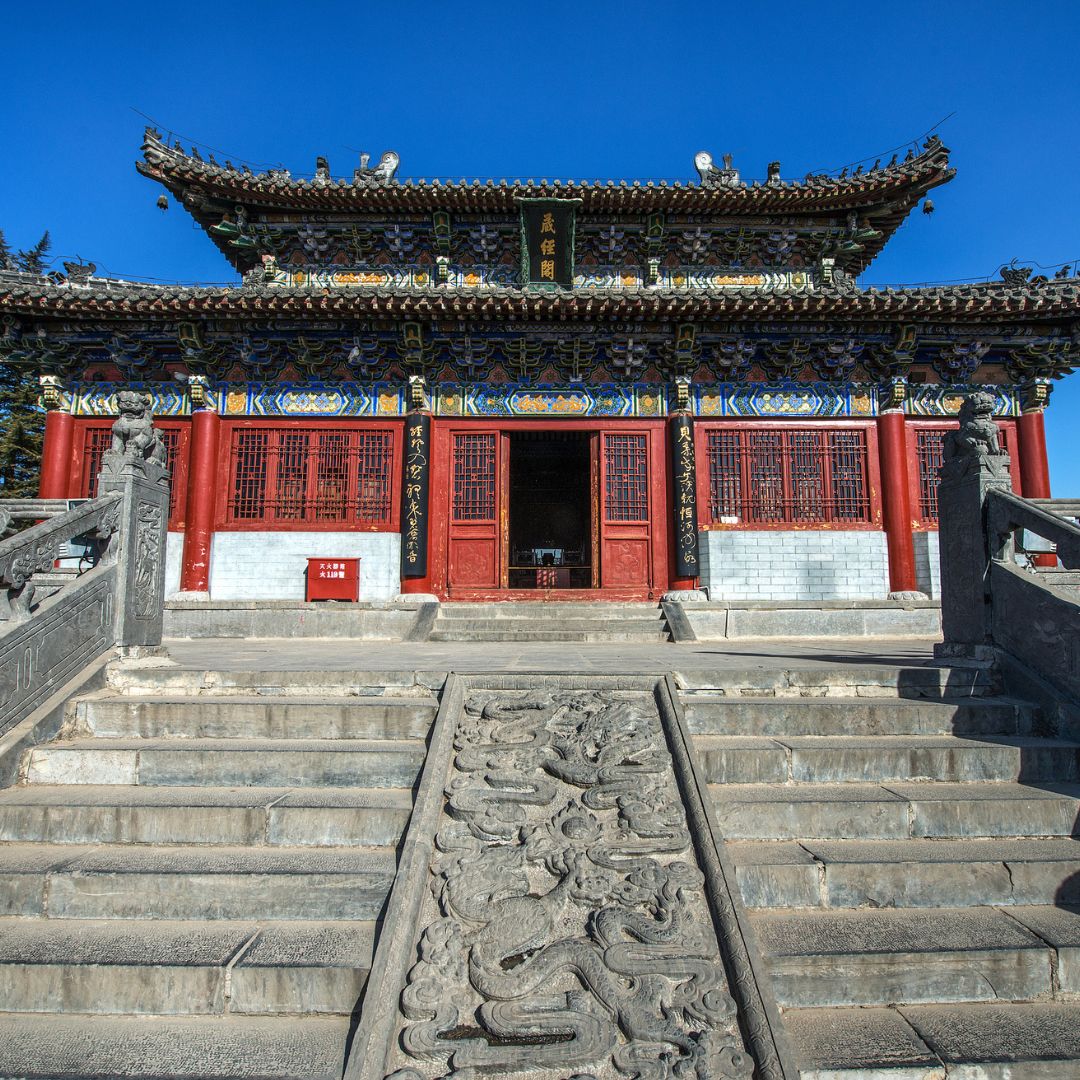
White Horse Temple Heritage.
Main Highlights: What You Absolutely Can’t Miss
Discovering the Essence of White Horse Temple (白马寺)
As you embark on your journey to the historic White Horse Temple, located just 12 kilometers east of Luoyang, prepare to immerse yourself in a rich tapestry of Chinese culture and Buddhist history. Known as the “Cradle of Chinese Buddhism,” this temple is a must-visit for anyone interested in the profound influences of Buddhism in China.
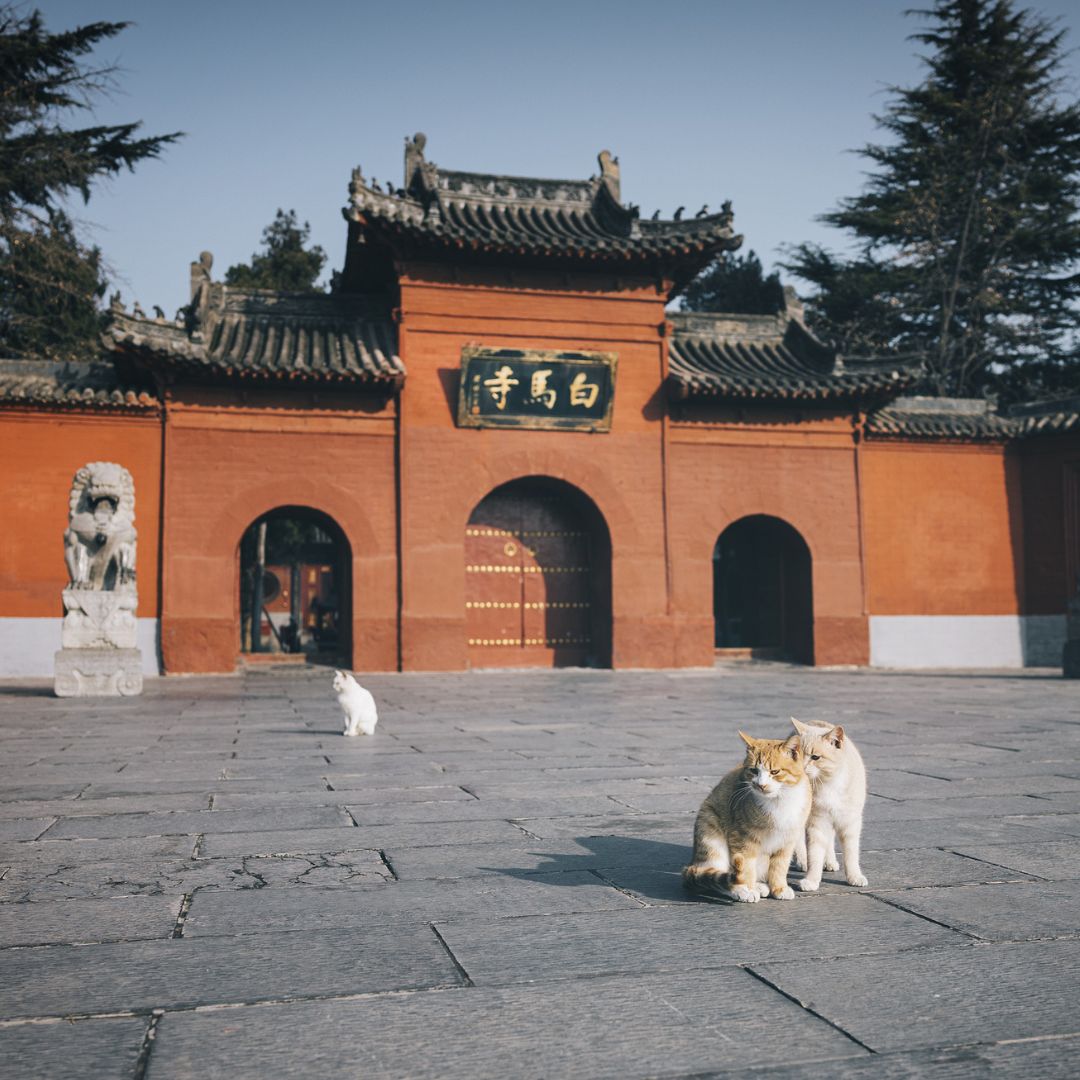
White Horse Temple Heritage.
The Historical Significance
Founded in 68 AD during the Eastern Han Dynasty, White Horse Temple is revered as the first official Buddhist temple in China, symbolizing the arrival of Buddhism in the Central Plains. The temple’s name is derived from the legend of a white horse that carried Buddhist scriptures from India to the Han court. This historical backdrop makes every visit a journey through time.
Architectural Marvels
The temple complex is an architectural wonder, designed in a rectangular layout that faces south. As you enter, you will encounter a series of magnificent halls, including:
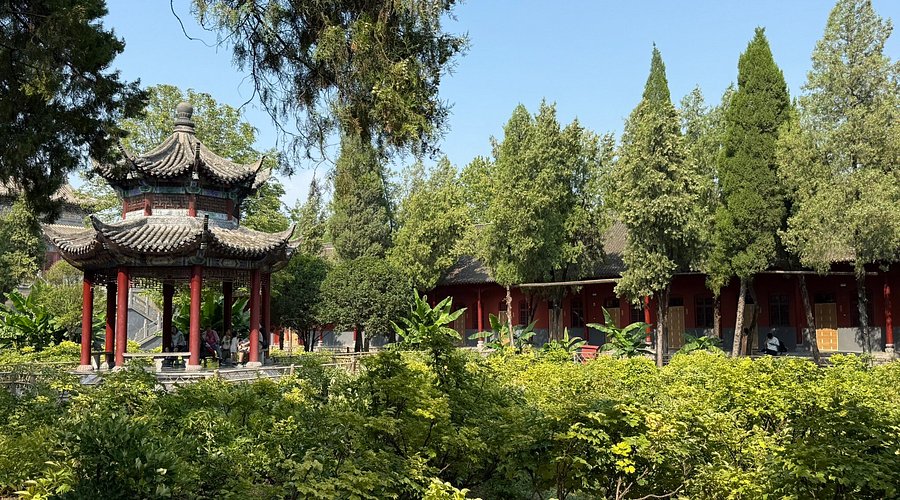
White Horse Temple Heritage.
- Mountain Gate (山门): Your entry point, adorned with traditional dragon motifs.
- Heavenly King Hall (天王殿): Home to statues of the Four Heavenly Kings, guarding the temple.
- Great Buddha Hall (大佛殿): The main hall, featuring a colossal Buddha statue that captivates visitors.
- Mahavira Hall (大雄殿): A spiritual centerpiece, known for its serene atmosphere and intricate carvings.
- Receiving Hall (接引殿): A place for welcoming visitors, showcasing the temple’s hospitality.
Don’t miss the International Buddhist Hall Area in the southwest corner, where you can explore stunning temples styled after Indian, Myanmar, Thai, and Chinese designs. This unique section celebrates the diversity of Buddhist architecture and culture.

White Horse Temple Heritage.
Tranquil Environment
Once inside, you’ll find the serene ambiance of the temple grounds provides a welcome escape from the bustling city. The gentle sounds of temple bells and chanting create a meditative atmosphere, allowing for reflection and peace. Take a leisurely stroll, and you might feel as if you have stepped back into ancient China.
Essential Visitor Information
- Tickets: Online ticket reservations are required through the official WeChat account, priced at 35 RMB for adults, with discounts available for students and seniors.
- Opening Hours: From April 1 to November 30, the temple is open from 07:40 AM to 06:40 PM; during the winter months, the hours shift to 08:00 AM to 05:30 PM.
- Getting There: Public transport options include bus routes 56, 58, 801, and 87, which stop at White Horse Temple. Alternatively, the subway’s Yangwan Station offers a shuttle service, though expect a short walk to the entrance.
Exploring the Surroundings
While at White Horse Temple, consider visiting nearby attractions:
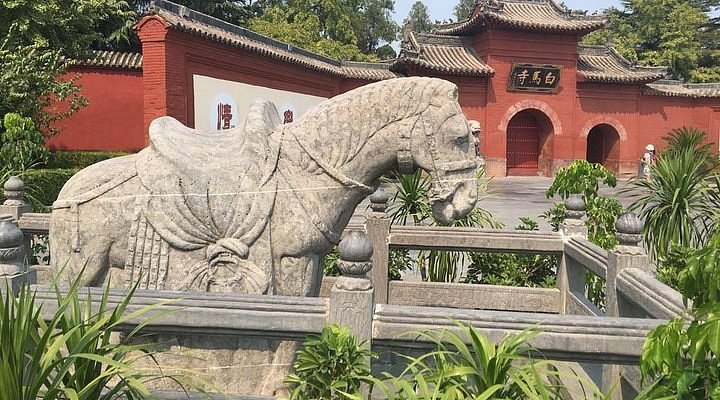
White Horse Temple Heritage.
- Di Renjie Tomb: The burial site of the famous Tang dynasty detective, known for his sharp wit and intelligence.
- Qiyun Pagoda: A historic pagoda that dates back to 69 AD, showcasing ancient architectural ingenuity.
Cultural Tips
- Photography: When taking photos, avoid using flash and respect the sanctity of the space by not photographing directly at the Buddha statues.
- Dress Code: Please dress modestly; it’s customary to remove hats and sunglasses when entering sacred spaces.
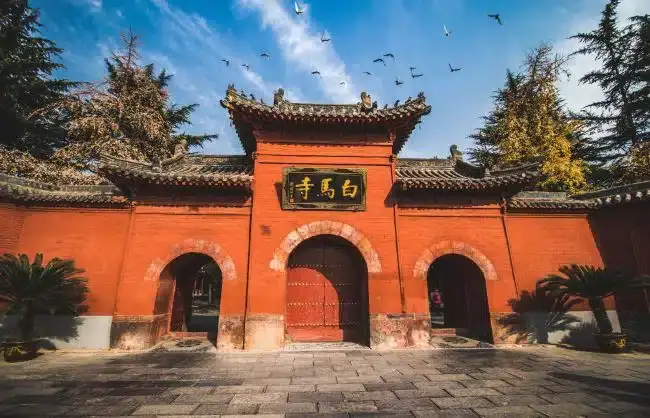
White Horse Temple Heritage.
Final Thoughts
White Horse Temple not only offers a glimpse into the early history of Buddhism in China but also provides a serene environment for personal reflection and cultural appreciation. Make sure to allocate at least 2-3 hours for your visit to fully soak in the atmosphere and explore the architectural highlights. Whether you are a history enthusiast or simply seeking tranquility, the White Horse Temple promises an unforgettable experience.
Planning Your Visit: A Practical Guide
Visiting White Horse Temple: A Comprehensive Practical Guide
Nestled in the historical city of Luoyang, Henan province, the White Horse Temple (白马寺) is not only a significant religious site but also a cultural gem that draws visitors from around the globe. Known as the “Cradle of Chinese Buddhism,” this temple complex offers a unique glimpse into the rich tapestry of China’s spiritual heritage. Here’s everything you need to know to make the most of your visit.
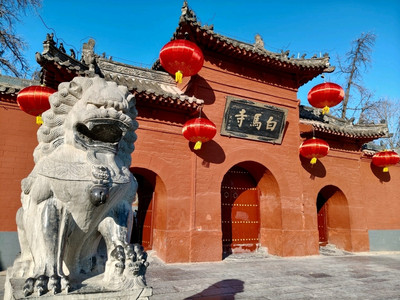
White Horse Temple Heritage.
Getting There
Location:
White Horse Temple is located about 12 kilometers east of Luoyang, flanked by the majestic Mangshan Mountain to the north and the tranquil Luo River to the south.
Transportation Options:
– Public Bus: Take buses 56, 58, 801, or 87 and disembark at the White Horse Temple stop.
– Subway: From Yangwan Station on Line 1 of the subway, you can catch a shuttle bus directly to the temple. Note that after disembarking, you will still have to walk approximately 1 kilometer to the entrance.
– Self-Driving: For those who prefer to drive, navigate to No. 6 Luobai Road, Luolong District, Luoyang. A parking lot near the entrance charges 10 RMB per visit, with no time restrictions.
Admission Details
- Ticket Price: Admission to the temple is 35 RMB per person. Discounts are available for students and teachers with valid identification, while seniors aged 60 and above can enter for free.
- Booking: The temple has transitioned to an online ticketing system. Reservations can be made through the official WeChat account “白马寺.”
- Opening Hours:
- April 1 to November 30: 07:40 AM to 06:40 PM (last entry at 06:00 PM)
- December 1 to March 31: 08:00 AM to 05:30 PM
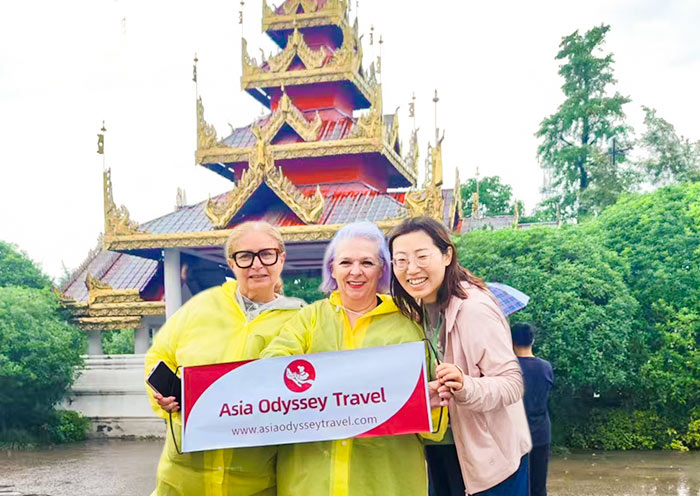
White Horse Temple Heritage.
Exploring the Temple
White Horse Temple is a rectangular layout oriented north to south, featuring several significant halls along its central axis:
1. Mountain Gate
2. Heavenly King Hall
3. Great Buddha Hall
4. Mahavira Hall
5. Receiving Hall
6. Pilu Pavilion
In addition, the temple boasts an International Buddha Hall Area, showcasing architectural styles from India, Myanmar, Thailand, and beyond. It stands out as the only temple in the world to feature such diverse cultural representations of Buddhism.
Recommended Itinerary:
– Start at the Mountain Gate: Capture stunning photos.
– Explore the Traditional Temple Area: Visit the various halls and experience the serene ambiance enriched with historical Buddhist sculptures and artifacts.
– International Buddha Hall Area: Immerse yourself in the eclectic styles of different countries’ Buddhist architecture.
– Tea House Experience: Take a break at the Zhi Yu Tea House, where you can enjoy tea in a tranquil setting.
– Nearby Attractions: Don’t miss the nearby Di Renjie Tomb and the Qi Yun Tower, the latter being the only nun’s tower in Henan Province, offering beautiful scenery.
Tips for Visitors
- Guided Tours: Consider hiring a guide at the entrance for a deeper understanding of the temple’s history and significance. Expect to pay around 40 RMB per hour.
- Photography Etiquette: While photography is encouraged, please avoid using flash and do not take photos directly of the Buddha statues to respect the religious customs.
- Dress Code: Dress modestly and respectfully. It is advisable to remove hats and sunglasses before entering sacred areas.
Accommodations and Dining
While there are various accommodation options in Luoyang, consider staying in the city center for easy access to local restaurants and other attractions. Notable dining options include:
– Qingzhen Majieshan Beef Soup Restaurant: A local favorite for hearty meals.
– Zhenbutong Restaurant: Known for its authentic Henan cuisine.
Final Thoughts
A visit to White Horse Temple is more than just a sightseeing excursion; it’s a journey into the heart of Chinese Buddhism and history. With its serene environment, stunning architecture, and rich cultural heritage, this temple promises an enriching experience that resonates long after your visit. Embrace the tranquility, immerse yourself in the culture, and let the spirit of this ancient site inspire you.
Tickets: Prices, Booking, and Tips
When planning your visit to the storied White Horse Temple (白马寺) in Luoyang, a few essential details about ticketing, booking, and practical tips will enhance your experience at this historic site.
Ticket Prices
- General Admission: ¥35 per person
- Discounted Tickets: Available at half price for students and teachers with valid identification.
- Free Entry: Visitors aged 60 and above, as well as certain other eligible groups, can enter for free.
Booking Information
In a modern twist, White Horse Temple has transitioned to an online booking system. Here’s how you can secure your tickets:
- Online Reservations: Tickets can be booked through the official WeChat account of White Horse Temple. This system has replaced the traditional on-site ticket sales.
- Payment: Ensure you have a WeChat Pay account or other accepted payment methods set up to complete your booking.
- Advance Booking: It’s advisable to book your tickets in advance, especially during peak tourist seasons, to avoid any last-minute hassles.
Opening Hours
The temple operates under varying hours depending on the season:
- April 1 to November 30: Open from 7:40 AM to 6:40 PM (last entry at 6:00 PM)
- December 1 to March 31: Open from 8:00 AM to 5:30 PM (last entry at 5:00 PM)
Travel Tips
- Transport Options:
- Public Bus: Take routes 56, 58, 801, or 87 and alight at the White Horse Temple stop.
- Metro + Shuttle: Use Line 1 to reach Yangwan Station, and catch a shuttle bus to the temple (note there is approximately a one-kilometer walk to the entrance from the drop-off point).
-
Driving: If you’re self-driving, input 6 Luobai Road, Luolong District, Luoyang into your GPS. There is a parking lot near the entrance, costing ¥10 per visit.
-
Suggested Visit Duration: Allocate about 2 to 3 hours to fully explore the temple grounds and soak in the serene atmosphere.
-
Photography Etiquette: When taking photos within the temple, avoid flash photography and direct shots of the Buddha statues to respect the sacred environment.
-
Dress Code: It’s recommended to wear modest clothing. Remove hats and sunglasses before entering any of the temple halls to show respect.
-
Guided Tours: If you wish to delve deeper into the history and significance of the temple, consider hiring a local guide. You can find audio guides on platforms like Himalaya, or hire an on-site guide for around ¥40 per hour.
Nearby Attractions
While visiting White Horse Temple, consider extending your journey to nearby historical sites, such as the Zhangde Temple and Qiyun Pagoda, to enrich your understanding of Luoyang’s cultural heritage.
Exploring White Horse Temple is not just a visit to an ancient site; it’s a journey through the roots of Chinese Buddhism and a unique opportunity to experience the harmonious blend of history and spirituality.
How to Get There: A Complete Transportation Guide
Navigating Your Way to White Horse Temple
White Horse Temple (白马寺), recognized as the birthplace of Chinese Buddhism, is a historical treasure located approximately 12 kilometers east of Luoyang in Henan Province. To ensure a smooth journey to this revered site, here’s a comprehensive guide on how to get there.
Getting to Luoyang
Before heading to White Horse Temple, you’ll first need to reach Luoyang. Here are the primary transportation options:
-
By Air: Luoyang has its own airport, Luoyang Beijiao Airport, which offers flights to major cities in China. From the airport, you can take a taxi or a shuttle bus to downtown Luoyang.
-
By Train: Luoyang is well-connected by high-speed trains, with regular services from cities such as Beijing, Shanghai, and Zhengzhou. The Luoyang Longmen Railway Station is the primary hub for these trains.
-
By Bus: Long-distance buses are available from nearby cities and provinces, arriving at the Luoyang Central Bus Station.
Reaching White Horse Temple
Once in Luoyang, accessing White Horse Temple is straightforward. Here are your options:
-
Public Bus: Several local bus routes serve the temple. You can take buses 56, 58, 801, or 87, which will drop you at the White Horse Temple station. This is a cost-effective option, though be prepared for a bit of walking.
-
Metro and Shuttle: If you prefer the metro, take Line 1 to Yangwan Station. From there, you will find shuttle services that take you closer to the temple entrance. Be aware that there’s about a kilometer walk from the drop-off point to the ticket gate.
-
Driving: If you’re considering renting a car, the destination is easily accessible via GPS. The temple is located at 6 Luo Bai Road, Luolong District, Luoyang. There is a parking lot near the entrance with a nominal fee of 10 RMB per visit, regardless of time spent.
Ticketing and Opening Hours
-
Tickets: Online ticket reservations can be made through WeChat by searching for “White Horse Temple” (白马寺). The entrance fee is 35 RMB per person, with discounts for students and free entry for seniors above 60.
-
Opening Hours: The temple is open from 7:40 AM to 6:40 PM from April 1 to November 30, and from 8:00 AM to 5:30 PM from December 1 to March 31. Note that last entries are typically 30 minutes before closing.
Additional Tips for Your Visit
-
Guided Tours: Consider hiring a local guide upon arrival for a deeper understanding of the temple’s rich history and architecture. Expect to pay around 40 RMB for an hour of guided service.
-
Cultural Respect: As you explore the temple grounds, maintain respect for the religious significance of the site. Avoid using flash photography near the statues and remember to dress modestly.
-
Nearby Attractions: After visiting White Horse Temple, you might want to explore nearby sites such as the tomb of the renowned detective Di Renjie or the picturesque Qiyun Tower.
With this transportation guide, your journey to the White Horse Temple will be both enjoyable and enlightening, allowing you to immerse yourself in the profound history of one of China’s most significant cultural landmarks. Safe travels!
Local Cuisine and Accommodation Nearby
Savoring Local Flavors and Comfortable Stays Near White Horse Temple
Visiting the historic White Horse Temple (白马寺) in Luoyang is not just a journey through time; it’s also an opportunity to indulge in some of China’s most delectable local cuisine and enjoy warm hospitality at nearby accommodations. Here’s a guide to help you experience the best of both worlds during your visit.
Culinary Delights in Luoyang
- Noodle Soup (牛肉汤)
-
Recommended Places:
- Ma Jie Shan Beef Soup (马杰山牛肉汤馆): Known for its rich, savory broth and tender beef, this eatery is a local favorite.
- Nan Guan Xiao Wan Beef Soup (南关小碗牛肉汤): This spot offers a delicious twist on the traditional soup, served in a small bowl that encourages you to savor every bite.
-
Luoyang Water Banquet (洛阳水席)
-
A unique dining experience comprising multiple courses, each showcasing the exquisite flavors of local ingredients. Luoyang Water Banquet Garden (洛阳水席园) is a reputable venue to experience this culinary tradition.
-
Steamed Dumplings (包子)
-
High-Quality Dumplings: Visit Xiao Qi Gui Steamed Dumplings (小气鬼蒸菜) for fluffy buns filled with a variety of meats and vegetables, perfect for a quick snack.
-
Sichuan Cuisine
-
If you’re in the mood for something spicier, Hua Yang Hot Pot (华阳火锅) offers an array of hot pot options that allow you to choose your ingredients and broth.
-
Local Snacks
- Don’t miss trying Luohe Bread (洛河饼), a flaky pastry often enjoyed with tea, or Zheng Ding’s Fried Noodles (真不同饭店) for a quick and filling meal.
Comfortable Stays
- Joyce Boutique Hotel (喜鹊洛神酒店)
-
Located near the city center, this hotel combines modern amenities with traditional Chinese aesthetics, offering a cozy atmosphere to unwind after a day of exploration.
-
Longmen Holiday Inn (龙门智选假日酒店)
-
Situated close to major attractions, this hotel provides comfortable rooms and excellent service, making it a great base for your Luoyang adventures.
-
Liying Inn (丽春路店)
-
A charming boutique inn known for its warm hospitality and personalized service. It’s a perfect choice if you appreciate a homely touch.
-
Yunyi Hotel (云怡酒店)
-
This hotel features contemporary design and is conveniently located near public transport, offering easy access to White Horse Temple and other attractions.
-
Luohe Fengxiang Hot Spring Hotel (洛阳凤翔温泉酒店)
- For travelers looking to relax, this hotel features hot spring facilities, ideal for unwinding after a day filled with sightseeing.
Final Thoughts
Whether you’re savoring the local flavors or enjoying the comfort of well-rated accommodations, your experience in Luoyang will be enhanced by the rich cultural backdrop of the White Horse Temple. Take the time to explore the culinary gems and cozy lodgings that make this historic city a memorable destination.
Frequently Asked Questions
Frequently Asked Questions about White Horse Temple (白马寺)
1. What is White Horse Temple and why is it significant?
White Horse Temple, established in 68 AD during the Eastern Han Dynasty, is recognized as the first state-sponsored Buddhist temple in China. It holds immense historical significance as the birthplace of Chinese Buddhism, often referred to as the “Cradle of Chinese Buddhism.” The temple was named after the legend of a white horse that carried Buddhist scriptures from India to China.
2. Where is White Horse Temple located?
The temple is situated about 12 kilometers east of Luoyang, Henan Province. It lies at the foot of the picturesque Mang Mountain to the north and faces the Luo River to the south, making it a serene escape from the hustle and bustle of urban life.
3. What are the opening hours and ticket prices?
– Opening Hours:
– April 1 to November 30: 7:40 AM – 6:40 PM (last entry at 6:00 PM)
– December 1 to March 31: 8:00 AM – 5:30 PM (last entry at 5:00 PM)
– Ticket Prices:
– Full price: 35 RMB
– Half-price for students and teachers with valid ID.
– Free for seniors over 60 and certain other groups.
4. How can I get to White Horse Temple?
– Public Transport: Take bus routes 56, 58, 801, or 87 and disembark at the White Horse Temple stop.
– By Metro: Take Line 1 to Yangwan Station, then use a shuttle bus to the temple (approximately a 1 km walk from the drop-off point).
– Driving: You can navigate directly to No. 6, Luobai Road, Luolong District, Luoyang. Paid parking is available nearby.
5. What can I see inside the temple?
The temple complex features a traditional layout with several significant halls aligned along a central axis, including the Heavenly King Hall, Great Buddha Hall, and the Main Hall. Additionally, the International Buddhist Hall showcases architectural styles from India, Myanmar, Thailand, and more, providing a unique cultural fusion experience.
6. Are there any special events or activities at the temple?
White Horse Temple hosts various cultural and religious activities throughout the year, including meditation sessions, traditional festivals, and ceremonies. It’s advisable to check the temple’s official WeChat account or local tourism websites for upcoming events during your visit.
7. What should I wear and how should I behave while visiting?
Visitors are encouraged to dress modestly and respectfully. Avoid wearing revealing clothing and remove hats and sunglasses before entering sacred areas. Additionally, refrain from using flash photography inside the temple, especially near the Buddha statues, to respect the sacred atmosphere.
8. Are there any nearby attractions worth visiting?
Yes! After exploring White Horse Temple, consider visiting the nearby attractions such as the Dì Rénjié Tomb, Qiyun Tower, and Longmen Grottoes—a UNESCO World Heritage Site known for its stunning Buddhist rock carvings. Each site offers a unique glimpse into the rich cultural and historical tapestry of the region.
Final Thoughts on Your Trip
As you conclude your journey through the enchanting grounds of the White Horse Temple (白马寺), take a moment to reflect on the rich tapestry of history and culture that this sacred site embodies. Established in 68 AD, it stands as a testament to the early introduction of Buddhism to China, earning its rightful title as the “Cradle of Chinese Buddhism.” Here are some final thoughts to enrich your experience:
A Journey Through Time
Visiting the White Horse Temple is more than just a sightseeing trip; it’s an immersive passage through centuries of spiritual evolution. Each hall, statue, and path resonates with stories of ancient monks and their tireless efforts to spread wisdom.
Embrace Cultural Diversity
The temple’s International Buddhist Pavilion is a unique highlight, showcasing architectural styles from India, Thailand, Myanmar, and more. This fusion of cultures offers a rare opportunity to witness how Buddhism transcends borders, creating a harmonious blend of traditions.
Serene Ambiance
The serene environment of the temple provides a welcoming escape from the hustle and bustle of modern life. As you stroll through the tranquil courtyards, listen to the soft sounds of chanting and the gentle ringing of bells, allowing the peaceful atmosphere to rejuvenate your spirit.
Practical Reminders
- Respect the Sacred: Remember to maintain decorum in this sacred space. Dress appropriately and always seek to honor the customs of the temple.
- Capture Memories: While photography is encouraged, be mindful of restrictions, especially around sacred statues.
Plan Your Return
Should you find yourself in the ancient city of Luoyang again, consider revisiting the White Horse Temple—its spiritual aura and cultural significance will always offer something new to discover.
In conclusion, your visit to the White Horse Temple marks not just a stop on your travel itinerary but rather a significant chapter in your understanding of Chinese culture and history. As you leave, carry with you the wisdom and tranquility that this revered site imparts, and let it inspire your future adventures. Safe travels!